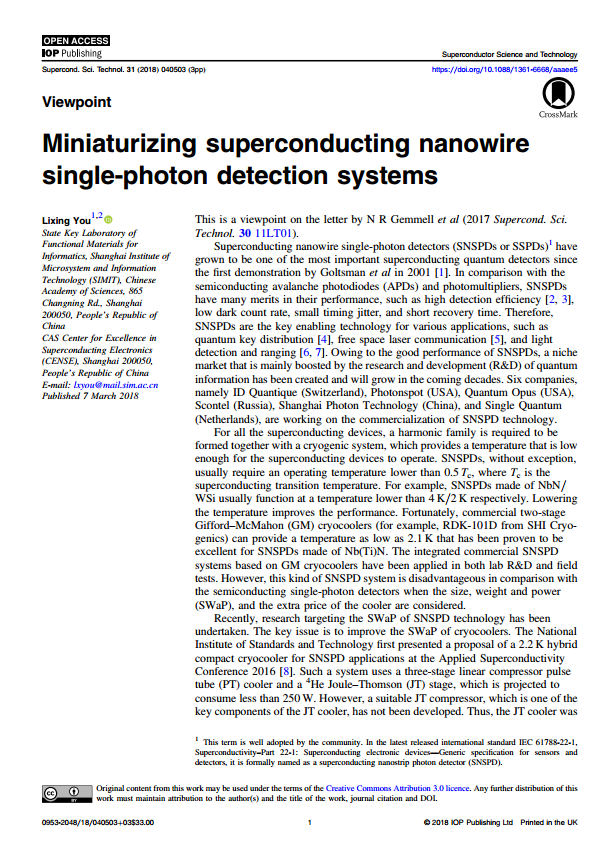Miniaturizing superconducting nanowire single-photon detection systems
Date:16-03-2018 | 【Print】 【close】
The researcher of Shanghai Institute of Microsystem, Lixing You has been invited to publish Viewpoint article in Superconductor Science and Technology.
Recently, the researcher of Center for Excellence in Superconducting Electronics and State Key Laboratory of Functional Materials for Informatics, Dr. Lixing You has been invited by Superconductor Science and Technology (SUST), the IOP Superconducting Academic Journal of the British Physical Society to publish a Viewpoint article based on the recent publication of the Journal, and this article is entitled “Miniaturizing superconducting nanowire single-photon detection systems”. This article has been formally published recently( http://iopscience.iop.org/article/10.1088/1361-6668/aaaee5 ). A Viewpoint is a scholarly view on a topic of importance recently covered by a Letter published in SUST. It's the first time a Chinese scholar has been invited to write a Viewpoint article in the magazine.
Dr. You is leading a team on the studiesof superconducting nanowire single photon detection (SNSPD) and the applications over the past decade. He is now the chief scientist of China's key research and development program "High performance single-photon detection technology" (2017-2022). The team has made a series of achievements in SNSPDs and their appliations. The parameters such as the detection efficiency and dark count rates are among the best records in the world. Besides, the SNSPDs have been applied into various quantum information experiments, which advances the science and technology of quantum information processing.
Recently, it turns to be a very interesting topic on how to implement a SNSPD system compatible to space application. This viewpoint article to summarize the recent work on this topic and show new insights and perspectives. Meanwhile, collaborated with Dr. Jingtao Liang from the Technical Institute of Physics and Chemistry, CAS, Dr. You demonstrated a SNSPD system based on the hybrid cryocooler compatible with space applications, which presented a record efficiency over 50%. The results was published on Optics Express (https://www.osapublishing.org/oe/abstract.cfm?URI=oe-26-3-2965 ) very recently.
